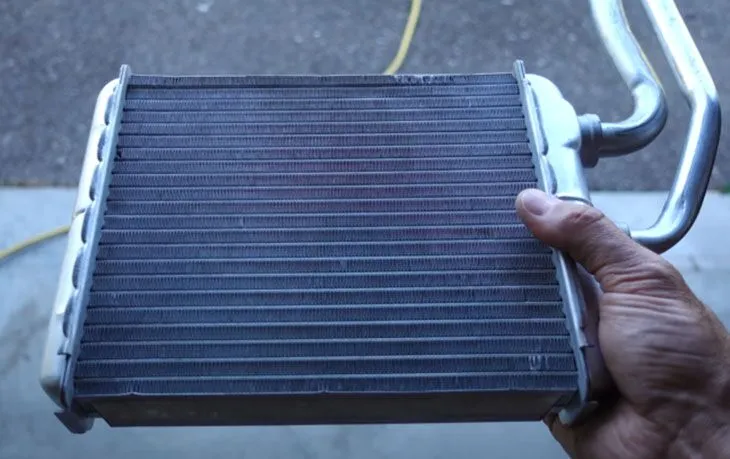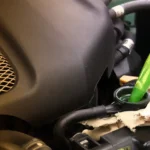
Simple Ways to Test a Heater Core
Heater cores play a crucial role in the functioning of a vehicle’s heating system. They are responsible for transferring heat from the engine coolant to the cabin, ensuring that you stay warm and comfortable during the colder months. However, like any other component, heater cores can develop issues over time. If you suspect that your heater core is not working properly, here are some simple ways to test it.
1. Check for Leaks
One common sign of a faulty heater core is a coolant leak. To check for leaks, you can start by inspecting the passenger side floorboard for any signs of moisture or a sweet smell. If you notice these symptoms, it is likely that your heater core is leaking and needs to be replaced.
2. Observe the Temperature Gauge
If your vehicle’s temperature gauge is constantly reading high, it could be an indication of a malfunctioning heater core. A clogged or blocked heater core can cause the engine to overheat, leading to an increase in the temperature gauge reading. Keep an eye on the gauge while driving to see if it remains within the normal range.
3. Check for Foggy Windows
Another way to test a heater core is by observing the windows. If you notice excessive fogging on the inside of your windows, even when the defrost function is on, it could be a sign of a faulty heater core. A malfunctioning heater core can cause moisture to accumulate inside the cabin, resulting in foggy windows.
4. Feel for Warm Air
One of the most obvious signs of a malfunctioning heater core is the absence of warm air when the heating system is turned on. If you are only getting cold air or lukewarm air from the vents, it is likely that your heater core is not functioning properly. This could be due to a clog or blockage in the core, preventing the hot coolant from reaching the cabin.
5. Perform a Pressure Test
A pressure test can help identify any leaks or weaknesses in the heater core. To perform this test, you will need a pressure tester and a coolant reservoir cap adapter. Connect the pressure tester to the coolant reservoir and pump it up to the recommended pressure. If there is a leak in the heater core, you will notice a drop in pressure. This test can help confirm if your heater core needs to be replaced.
6. Seek Professional Help
If you are unsure about testing the heater core yourself or if you have performed the above tests and still cannot determine the issue, it is best to seek professional help. A qualified mechanic will have the necessary tools and expertise to diagnose and repair any problems with your heater core.
Remember, regular maintenance and inspections can help prevent heater core issues. It is important to keep your cooling system clean and free from debris to ensure the longevity and proper functioning of your heater core.
By following these simple ways to test a heater core, you can identify any potential issues and take the necessary steps to address them. A properly functioning heater core is essential for a comfortable driving experience, especially during the colder months.
What Is A Heater Core?
A heater core is a major component of a vehicle’s heating and cooling system.
It is a small radiator-like part located under the dashboard inside the cabin, which provides warm air to the car’s interior using a hot coolant level from the constant engine compartment.
As the mist of coolant flow passes through the body heater core, the heat is transferred to the air blown into the cabin, allowing passengers to stay comfortable in colder weather.
The heater core tubes are vital in maintaining a cozy and warm environment inside the car during chilly conditions.
How To Test A Heater Core?
How to check heater core? To test a heater core, park the vehicle, locate the heater core damage, inspect for leaks, conduct a pressure test, check the heat output, and observe the cooling system.
Park The Vehicle
Safety is the top priority; working on a level ground helps ensure stability during testing.
Additionally, allowing the engine to cool down is crucial to avoid any risk of burns or injuries.
Parking the vehicle also enables easy access to the front and rear portions of the engine compartment, where problems typically arise.
This makes inspecting the heater core connections and performing further tests visually more straightforward.
Locate The Heater Core
The heater core is typically situated behind your truck’s dashboard and is connected to the engine’s cooling system. You can find it by following the two hoses from the firewall.
I usually look for where these hoses enter the firewall, and there locate the extra heater core. Then, take a close look for any signs of external leaks or damage around the adapter fittings and radiator hoses.
Inspect For Leaks
How to know if heater core is bad? To inspect for leaks in the heater core, you’ll first need to visually examine the area around the heater core for any signs of coolant leaks.
Look for wet spots, puddles, or stains on the floorboard or carpet beneath the dashboard, which could indicate a leak.
You may also notice a musty smell inside the vehicle, a common sign of a coolant leak.
Next, check the coolant level in the radiator and overflow reservoir. A significant decrease in coolant level without any visible leaks in the engine bay could suggest a leak in the heater core.
Additionally, pay attention to the temperature gauge on your vehicle’s dashboard.
If the engine is overheating, it could hint at a heater core leak, as coolant loss can lead to inadequate cooling.
Pressure Test
How to test heater core? Here’s how to do it:
- Let the car’s engine cool down completely before starting the test.
- Remove the radiator cap and install the cooling system pressure tester. Make sure it is tightly secured.
- Pump the pressure tester to build pressure in the cooling system. Refer to your vehicle’s specifications for the recommended pressure level. Typically, it is around 15 to 18 psi (pounds per square inch).
- Once the desired pressure is reached, carefully inspect the heater core and the surrounding area for any telltale signs of leaks, such as coolant dripping or spraying.
Check Heat Output
To check the heat output of the heater core, start your car’s engine, turn on the heater to the highest temperature setting, and set the fan speed to maximum.
Feel the air coming from the cabin vents; it should be warm or hot.
If the air is cool or there are unusual odors, there may be a faulty heater core.
Additionally, have your vehicle inspected by a mechanic for proper diagnosis and cooling system maintenance.
Observe Cooling System
How to tell if heater core is bad? Check the temperature gauge on your vehicle’s dashboard while it’s running to evaluate the cooling system.
It should remain stable and within typical limits.
If the temperature gauge refers to the engine overheating, this may suggest a problem with the cooling system or the heater core.
Look for any evidence of core heater leaks or bad smells near the engine block.
What Are Common Signs Of Faulty Heater Core?
ommon symptoms of a clogged heater core include:
Lack Of Heat
The first sign of a bad heater core is a lack of heat from the car’s vents when turned on.
When the heater core is clogged, damaged, or leaking, it can prevent the circulation of hot coolant through the core.
As a result, warm air won’t be able to reach the cabin, and the interior of the vehicle will remain cold, even when the heating system is activated.
Frequent Loss Of Coolant
How to tell if your heater core is bad?
Since the heater core is a part of the truck’s cooling system, any damage or leakage can lead to coolant loss.
You may notice that your car’s coolant level keeps dropping, and you need to refill it more often than usual.
Additionally, you might observe coolant puddles under the car or detect a sweet smell inside the vehicle, which could indicate a coolant leak.
Fog Or Film On The Windshield
When the heater core fails and leaks, the hot coolant vaporizes and enters the cabin, leaving the mist on the windscreen, which is one of the symptoms of clogged heater core.
This condensation can cause a foggy or hazy film on the glass, blocking your vision and making driving dangerous.
In case you observe persistent film on your windshield, especially when you turn on the heater or defroster, it could be a hint of a heater core problem.
Furthermore, the fog may have a pleasant odor due to coolant vapor.
Engine Overheating
When the heater core becomes blocked or leaks, it can disturb the proper coolant flow throughout the engine cooling system.
As a result, the engine may not receive adequate cooling, leading to overheating.
A faulty heater core might lower coolant levels or circulation and elevate engine temperatures.
How do you know if your heater core is clogged?
If the engine temperature gauge frequently displays higher-than-normal readings, it indicates a problem with the cooling system, which includes the heater core.
Frequently Asked Questions
Can I Perform A Basic Test Without Specialized Tools?
While a full diagnosis may require professional equipment, you can do some simple checks at home to assess the functionality or the plugged heater core symptoms.
- Touch Test: First, start the vehicle and allow your truck to reach operating temperature. Turn on the heater to the highest setting and feel the air coming from the vents.
If the air feels cold or significantly cooler than the engine temperature, it could indicate a problem with the heater core.
- Smell Test: If you notice a sweet, syrupy smell inside the vehicle, it could be signs of clogged heater core or a coolant leak from the heater core. The antifreeze in the coolant gives off the odor and may indicate a leak in the heating system.
- Coolant Level Check: Inspect the coolant reservoir to ensure it has an adequate amount of coolant. A low coolant level could suggest a leak in the system, including the heater core.
What If I Suspect A Heater Core Issue But Don’t Notice Any Visible Leaks Or Heating Problems?
How do I know if my heater core is clogged if there is no leak?
If you suspect a heater core issue but don’t notice any visible leaks or heating problems, monitor the coolant levels regularly and check for a sweet smell inside the vehicle while running the heater.
Don’t ignore any suspicions to prevent further damage and ensure your vehicle’s cooling and heating system functions correctly.
How Can I Visually Inspect The Heater Core For Leaks?
To visually inspect the heater core for leaks:
- Park the vehicle and let it cool down.
- Open the hood and locate the heater core.
- Check for coolant leaks around the heater core and hoses.
- Look for wet spots or stains in the passenger footwell.
- Examine the coolant reservoir and radiator for any drop in levels.




